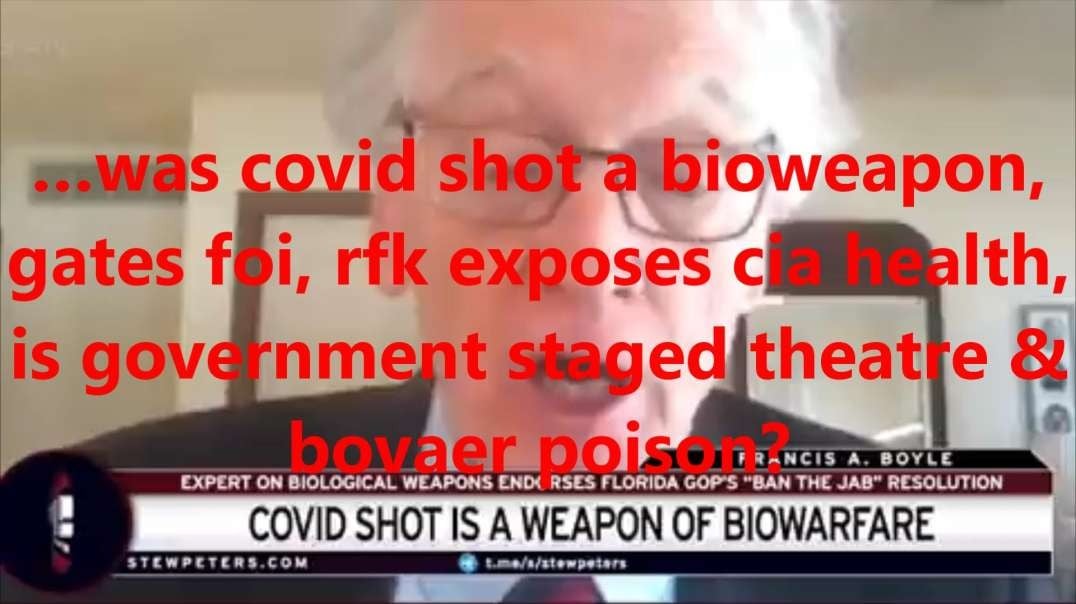CIA Media
Media made by CIA and MI6
https://www.youtube.com/watch?v=0I5BZCcURa4
https://www.thedailybeast.com/....cheats/2016/10/14/ho
https://americanfreepress.net/....perpetual-war-and-th
https://www.paulcraigroberts.o....rg/2014/10/16/cia-ow
https://www.youtube.com/watch?v=Dnid0Jc1N5g
https://www.youtube.com/watch?v=lNI07egoefc
https://www.youtube.com/watch?v=EkgCta01Qr0
https://www.youtube.com/watch?v=KgHnbK99Gc4
https://fortheinterested.com/modern-art-cia/
https://www.theransomnote.com/....musings/news/cia-adm
https://gizmodo.com/how-the-ci....a-spent-secret-milli
https://www.voltairenet.org/article167512.html
https://www.independent.co.uk/....news/world/modern-ar
In addition to being a political and economic battle, the confrontation between the United States and the Soviet Union was a clash of cultures. About the book: https://www.amazon.com/gp/prod....uct/1595589147/ref=a
Communist party leaders depicted the United States as a cultural black hole and cited their own significant culture as evidence that they were the inheritors of the European Enlightenment (Wilford 100). Americans, on the other hand accused the Soviets of “disregarding the inherent value of culture” and subjugating art to the controlling policies of a totalitarian political system. The United States saw itself as being saddled with the responsibility of preserving and fostering the best cultural traditions of western civilization, as many European artists sought refuge in the United States before, during, and after World War II (Wilford 101). Europe and European Universities turned out to be in the epicenter of the Cultural Cold War.
In 1950, the Central Intelligence Agency (CIA) surreptitiously created the Congress for Cultural Freedom (CCF) to counter the Cominform’s “peace offensive”(Wilford 101). The Congress had “offices in thirty-five countries, employed dozens of personnel, published over twenty prestige magazines, held art exhibitions, owned a news and features service, organized high-profile international conferences, and rewarded musicians and artists with prizes and public performances” at its peak (Saunders 2000). The intent of these endeavors was to “showcase” US and European high culture, including not just musical works but paintings, ballets, and other artistic avenues, for the benefit of neutralist foreign intellectuals (Wilford 102).
Many US government organizations used classical symphonies, Broadway musicals, and jazz performances (including musicians such as Dizzy Gillespie) in attempts to persuade audiences worldwide America was a cradle for the growth of music (Wilford 108-109). The CIA and, in turn the CCF, displayed reluctance to patronize America’s musical avant-garde, experimental, including artists such as Milton Babbitt and John Cage. The CCF took a more conservative approach, as outlined under its General Secretary, Nicolas Nabokov, and concentrated its efforts on presenting older European works that had been banned or by the Communist Party (Wilford 109).
In 1952, the CCF sponsored the “Festival of Twentieth-Century Masterpieces of Modern Arts” in Paris. Over the next thirty days, the festival hosted nine separate orchestras which performed works by over 70 composers, many of whom had been dismissed by communist critics as “degenerate” and “sterile,”; included in this group were composers such as Dmitri Shostakovich and Claude Debussy (Wilford 109). The festival opened with a performance of Stravinsky’s The Rite of Spring, as performed by the Boston Symphony Orchestra (109). Thomas Braden, a senior member of the CIA said: “The Boston Symphony Orchestra won more acclaim for the US in Paris than John Foster Dulles or Dwight D. Eisenhower could have brought with a hundred speeches” (Wilford 110)
The CIA in particular utilized a wide range of musical genres, including Broadway musicals, and even the jazz of Dizzy Gillespie, to convince music enthusiasts across the globe that the U.S. was committed to the musical arts as much as they were to the literary and visual arts. Under the leadership of Nabokov, the CCF organized impressive musical events that were anti-communist in nature, transporting America’s prime musical talents to Berlin, Paris, and London to provide a steady series of performances and festivals. In order to promote cooperation between artists and the CCF, and thus extend their ideals, the CCF provided financial aid to artists in need of monetary assistance.
However, the CCF failed to offer much support for classical music associated with the likes of Bach, Mozart, and Beethoven because it was deemed an “authoritarian” tool of Soviet communism and wartime German and Italian fascism. The CCF also distanced itself from experimental musical avant-garde artists such as Milton Babbit and John Cage, preferring to focus on earlier European works that had been banned or condemned as “formalist” by Soviet authorities.
During the Cold War, Louis Armstrong was promoted around the world as a symbol of US culture, racial progress, and foreign policy. It was during the Jim Crow Era that Armstrong was appointed a Goodwill Jazz Ambassador, and his job entailed representing the American government’s commitment to advance the liberties of African Americans at home, while also working to endorse the social freedom of those abroad.
http://en.wikipedia.org/wiki/T....he_CIA_and_the_Cultu
WOW CIA MODERN ART IS EMBEDDED https://ugetube.com/watch/cia-....modern-art_2sUU3e2a9

RIP. Another Hero came out. Spoke to the people and died for doing so.
God Bless his Soul.
Thank you for coming forward and telling the world you're done with covering up with lies God bless you thank you




















